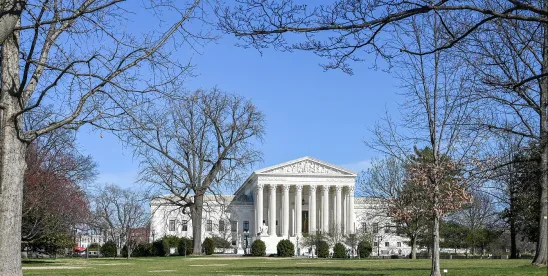On June 28, 2024, SCOTUS overturned the long-standing Chevron doctrine in its decision Loper Bright Enterprises v. Raimondo and Relentless v. Department of Commerce. The Court’s ruling will have a significant impact on industries regulated by federal agencies, which historically have issued “guidance” interpreting the statutes, rules, and regulations they administer. As one of the most heavily federally regulated industries, the healthcare industry will likely experience a great recalibration, as Medicare guidance may be questioned by courts.
In Chevron v. Natural Resources Defense Council, Inc., 467 US 837 (1984), SCOTUS held that where a statute is unclear or ambiguous, courts should look first to the relevant federal agency’s reasonable interpretation of the statute it administers. The Court reasoned that those with “great expertise and charged with responsibility for administering the provision would be in a better position to do so…Judges are not experts in the field, and are not part of either political branch of the Government.” Chevron, 467 US at 865.
However, in Loper, the Court reversed course and held that the Administrative Procedure Act (APA) requires courts to exercise their independent judgment in deciding whether an agency has acted within its statutory authority. In sum, Loper prohibits courts from deferring to an agency interpretation of the law simply because a statute is ambiguous. Such a shift constitutes a new legal framework in which judges, rather than federal agencies, will interpret the laws under which industries operate. This shift will affect every healthcare provider, entity, and operator that accepts Medicare and Medicaid payments.
Medicare and Medicaid
The Department of Health and Human Services (HHS), acting through the Centers for Medicare and Medicaid Services (CMS) is tasked with administering Medicare, Medicaid, and other related programs. These programs are extraordinarily complex, as the Supreme Court and other courts have noted (see, e.g., Wos v. E.M.A. ex rel. Johnson, 568 U.S. 627, 648 (2013) (acknowledging that many courts observe Medicaid law is ‘almost unintelligible to the uninitiated’)). The American Cancer Society’s amicus brief in Loper, for example, noted, “[t]he complexities necessitate, in turn, that [HHS] and CMS be afforded interpretive and programmatic flexibility in implementing the statutes.” Such regulations depend on the “subject matter expertise that [HHS] and CMS deploy in exercising this authority,” and the reversal of Chevron willalmost certainly bring about a “litigation tsunami” given the great deal of money at stake in challenges to Medicare and Medicaid rules. Without such deference afforded to HHS and CMS, however, providers may experience greater success convincing a court exercising independent judgment to side with providers more often in payment disputes.
Healthcare Fraud and Abuse
Multiple federal agencies, including the Department of Justice (DOJ), Department of Health & Human Services Office of Inspector General (OIG), and CMS, are charged with enforcing federal fraud and abuse laws. Federal fraud and abuse laws include the False Claims Act (FCA), the Anti-Kickback Statute (AKS), the Physician Self-Referral Law (the “Stark law”), Civil Monetary Penalties Law (CMP), and Exclusion Authorities. Prior to Loper, these agencies interpreted the complicated fraud and abuse landscape by publishing compliance guidance. For example, the OIG publishes Special Fraud Alerts and OIG Advisory opinions, which put providers on notice of the agency’s understanding of a certain area of the law – including new and emerging areas of the law.
Under Chevron, providers could rely on the agency’s guidance to ensure compliance. Often courts have looked to the agencies’ interpretation of the statutes in deciding high-stake enforcement actions. Courts may still choose to rely on guidance as part of their exercise of judgment, but Loper begs the question of whether the government may succeed in convincing a court to prosecute defendants who on paper appeared compliant under old guidance. Alternatively, Loper may give a defendant that has not complied with guidance the opportunity to argue to a court that the guidance is inconsistent with a statute or otherwise outside of an agency’s statutory authority. Whether and how courts will apply the law in the future, relative to an agency’s interpretation of a law in the past, is currently unknown, generally leaving the industry uneasy.
Hospice
Enforcement actions asserting that patients received medically unnecessary care often involve guidance from local coverage determinations (LCDs) made by Medicare Administrative Contractors (MACs) on whether to cover a certain item or service in a MAC’s region. MACs are contractors engaged by CMS that develop LCDs and process Medicare claims. As guidance from a contractor engaged by an agency, the LCDs are a step further removed from the regulations at issue in Loper, placing even further doubt on whether courts will rely on them.
For example, in the hospice context, Medicare offers benefits for people who have a life expectancy of six months or less if their illness runs its normal course. A physician must certify in writing, that based on his or her clinical judgment, the individual has such a prognosis. However, CMS does not provide instruction as to how the physician should form his or her judgment as to whether the patient has a terminal prognosis, and the government often uses LCDs to fill that gap. Although hospice prognosis LCDs have historically been sufficient to demonstrate eligibility, the fact that a patient did not meet an LCD’s specific criteria does not mean a patient isn’t terminally ill — although the government often takes that position. Although Loper has created uncertainty in many contexts, in the hospice arena, it may make courts more willing to hear a defendant’s side when the government challenges a physician’s reasonable clinical judgment. The overruling of Chevron is a marked shift in the balance of power between federal agencies and the courts. Though we will not yet know what the healthcare system will look like in coming decades, we can expect courts will now play a major role.







 />i
/>i

